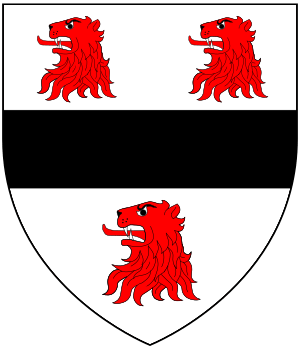Sir William Fermor, 1st Baronet facts for kids
Sir William Fermor, 1st Baronet (sometimes called Farmer or Fermour) (1621 – 14 May 1661) was an important officer in the Royalist army. This army supported the King during the English Civil War. After the King returned to power in 1660, a time known as the Restoration, Sir William tried to become a Member of Parliament. Sadly, he passed away before it was decided if he had won the election.
Contents
Early Life and Family Background
William Fermor was the oldest son of Sir Hatton Fermor. His family lived at Easton Neston in Northamptonshire. William's mother was Anna, the daughter of Sir William Cockayne, who was a very important person called the Lord Mayor of London.
William's father, Sir Hatton Fermor, was given the title of Knight by King James I in 1603. Sir Hatton passed away in 1640. Because William was still young, his mother, Anna, took care of his affairs. William was born in London and was baptized on November 7, 1621. He went to Exeter College, Oxford in 1636 but did not finish his degree.
Serving the King in the Civil War
Just one year after his father died, King Charles I gave William Fermor a special title: a Baronet. This was on September 6, 1641. The King also put William in charge of a group of soldiers on horseback. Later, he made William a Privy Councillor to Prince Charles, who would become King Charles II.
In 1642, William was chosen to help organize the army in Northamptonshire. He fought as a captain with the Royalist forces. He was part of the Battle of Edgehill in October 1642. Sir William stayed in the army until 1645.
Life During the Commonwealth Period
After the King's side lost the war, England was ruled by Parliament. This time was called the Commonwealth. Sir William Fermor lived quietly at Easton Neston. However, his family's money was much less than before. He had to pay a large fee of £1,400 to the government for his lands. He was allowed to collect his own rents, but he had to give the money to the government.
In 1651, the authorities found out that William had married Mary a few years earlier. Mary was the daughter of Hugh Perry and the widow of Henry Noel. She brought him an estate worth £300. Because of this, he had to pay another fee to the government.
Some people tried to cause trouble for Sir William. Two men, John Willoughby and John Digby, tried to make him look bad to the government. Sir William was called to appear before the council. But it was proven that the stories against him were false. Willoughby and Digby had even challenged him to a duel. As a result, they were sent to the Tower of London. They had to apologize to Sir William. He was praised for acting like "a man of honour."
Challenges During the Protectorship
In 1655, another accusation was made against Sir William. He was accused of harming the Protector's deer and helping deer-stealers. He was called before the council again. However, there is no record of him being punished for this.
The King Returns: The Restoration
When the King returned to power in 1660, Sir William Fermor's luck changed for the better. In May 1660, he became a member of the privy council. He also ran for Parliament in the area of Brackley. He was one of three people chosen on April 2.
Sir William was also made a Deputy-Lieutenant for Northamptonshire. On April 18, he received another special honor: he was made a Knight of the Bath. On April 23, he took part in the King's coronation. This was his last public appearance. He passed away three weeks later, on May 14, 1661. Sir William was buried at Easton Neston.
Sir William's Family
Sir William Fermor married Mary (who passed away in 1670) in 1646 or 1647. She was the daughter of Hugh Perry and the widow of Henry Noel. William and Mary had five sons and two daughters. Their oldest son, also named William, was later given the title of Lord Leominster in 1692. His son, Thomas, became the first earl of Pomfret in 1721.


